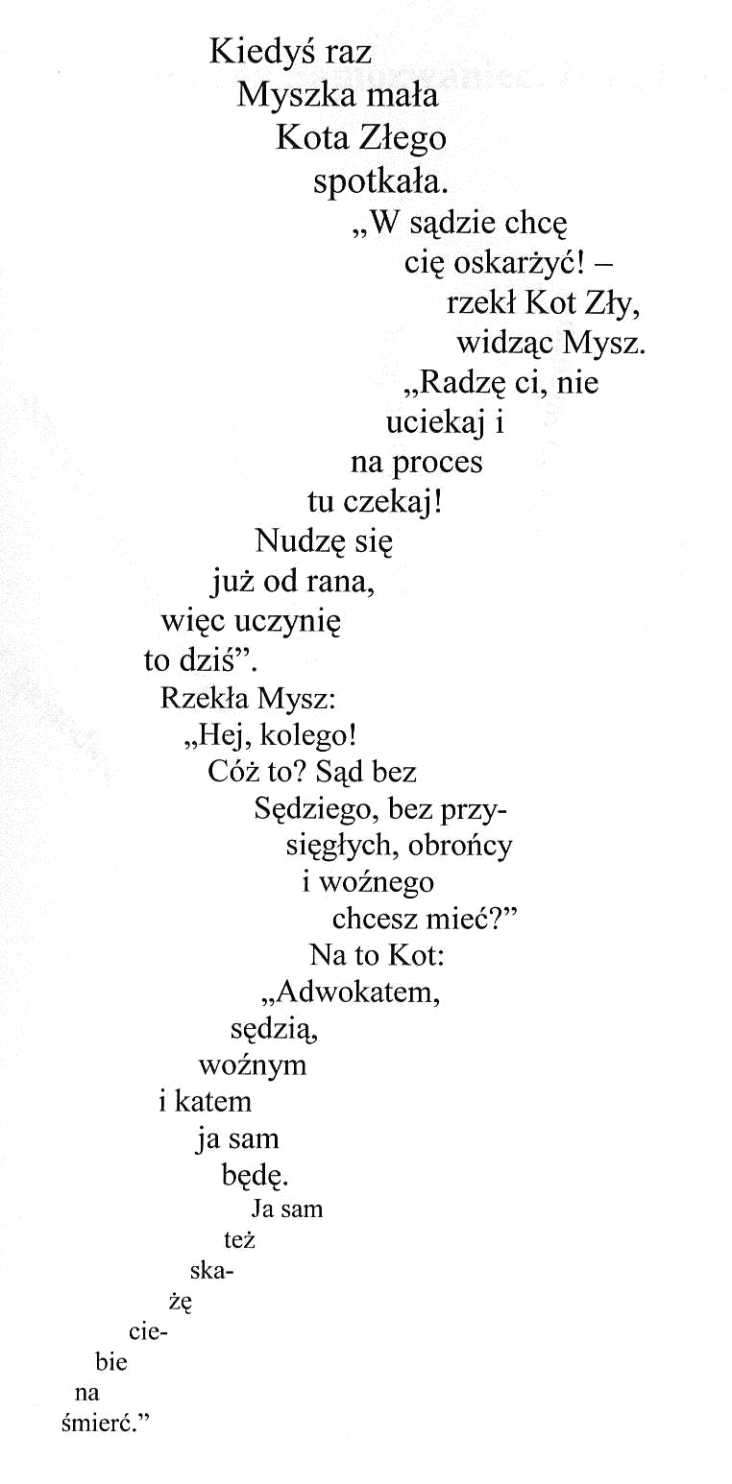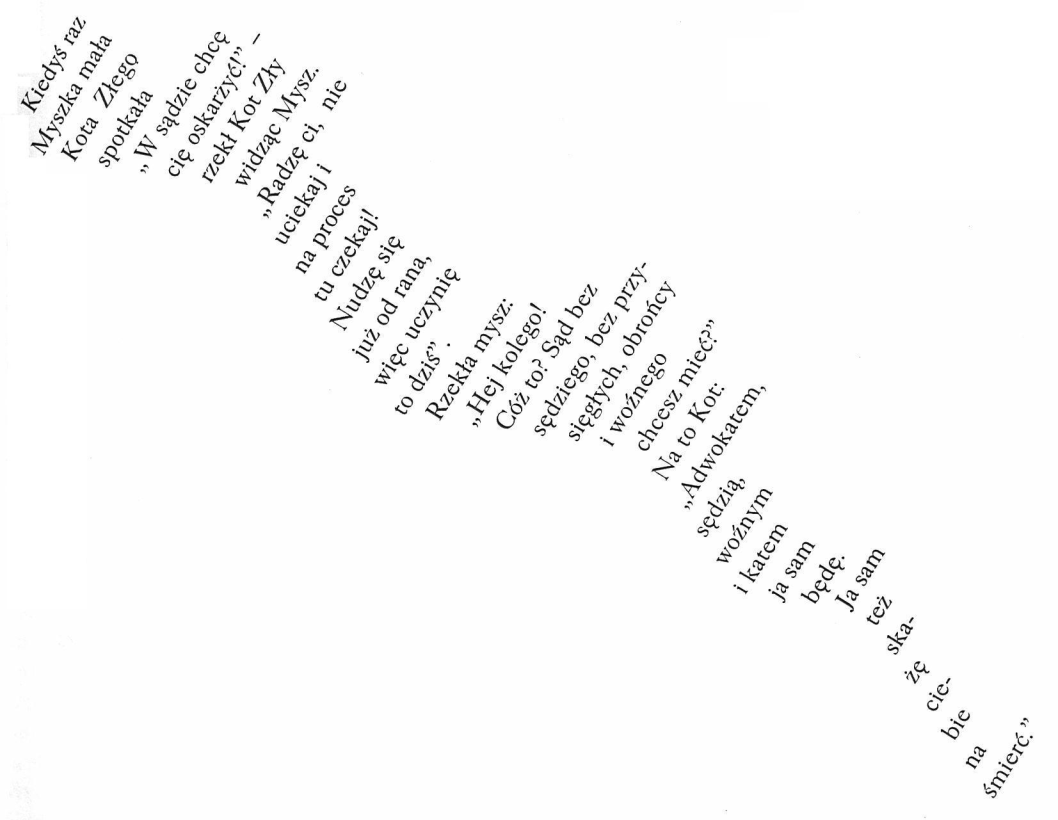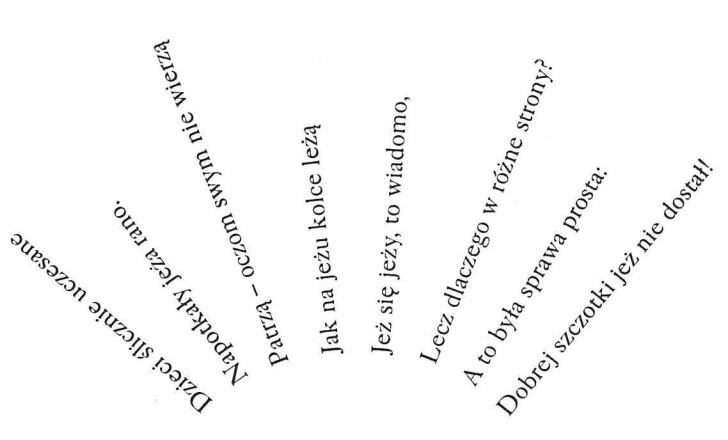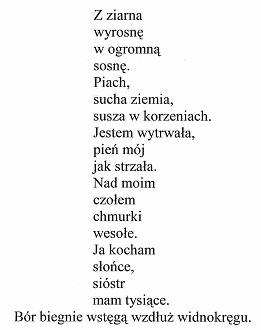Ноземна філологія inozemna philologia 2007. Вип. 119. С. 3-6 2007. Issue 119. Р. 3-6
| Вид материала | Документы |
- Ноземна філологія inozemna philologia 2007. Вип. 119(2). С. 3-9 2007. Issue 119(2)., 4217.57kb.
- Проблеми слов’янознавства problemy slov´ianoznavstva 2007. Вип. 56. С. 112-119 2007., 188.23kb.
- Камчатский государственный технический университет, 33.59kb.
- Публичный доклад муниципального дошкольного образовательного учреждения детского сада, 71.26kb.
- Лещинская, В. В. Альпинарии и камни в саду / Лещинская В. В.; [ ред. Рубайло, 14.35kb.
- Інформаційний вісник, 993.03kb.
- 04. 2003 №119, зареєстрованим у Міністерстві юстиції України 29., 120.44kb.
- Доклад моу «сош №119» г. Перми за 2008-2009 учебный год Общая характеристика моу "Средняя, 974.94kb.
- 04. 2003 №119, зареєстрованим у Міністерстві юстиції України 29., 265.54kb.
- 04. 2003 №119, зареєстрованим у Міністерстві юстиції України 29., 274.81kb.
^ ВІЙНА І ДОСВІД ВІЙНИ ЯК РУЙНУВАННЯ ПІДЛІТКОВИХ ІДОЛІВ
Гаральд Бахе-Вііґ
Після Другої світової війни у Норвегії блискавично витворився такий собі героїчний національний епос. За цим міфом, увесь народ у священному та відкритому двобої здолав німецьку окупаційну владу, зазнавши великих втрат і виявивши геройську хоробрість. Вихідним пунктом статті є припущення, що цей міф виразно простежується і в книжках для дітей та юнацтва. Предмет дослідження – деякі книжки з початку повоєнного періоду, проте автор дійшов несподіваних висновків. Хлоп’яче геройство не є головною тематикою цих книг, а, радше – доказом того, що війна тягне за собою жахіття, ізоляцію та руйнування. Тут, властиво, йдеться не про розквіт старих хлоп’ячих ідеалів, а, радше, належить припустити, що проголошується крах таких ідеалів. Підтвердження цього можна знайти у творах дитячого письменника Альфа Квасбе (нар. 1928), який у 70–90-х роках минулого сторіччя інтенсивно розробляв тематику подій Другої світової війни. На його думку, війна несе людині не визрівання мужності, а психічне каліцтво.
Ключові слова: хлоп’яче геройство; війна; воєнні страждання; міф; крах ідеалу.
УДК 821.162.1’06-1.09: 801.6
^ SOME VISUALISATION TECHNIQUES EMPLOYED IN POETRY FOR CHILDREN
Maria Ostasz
Academy of Pedagogy in Krakow
Visualization is a characteristic feature of the poetry for children and the one which remains in agreement with psychophysical construction of the young recipient. It is possible to differentiate between several kinds of visualization creation that represent narrative structures, content and sound layers in the graphic form of the poem and constitute its picture and they were the basis for creating the above taxonomy. Simultaneously, each of the analyzed poems is a masterpiece with their unique narrative, content and sound structure.
^ Key words: visual poetry; graphic rhyme; calligram; carmen figuratum.
The analyses of ideographic poems which employ a range of visualization techniques and are addressed to a young reader constitutes the subject matter of this paper. This kind of visualization reflects the narrative structure, the meaning and the sound layer of a poem in its graphic representation. The observation of the theoreticians of semiotic which holds that concrete poetry is a visual realization of the text and it experiments with a word is of key importance for the children’s literature examined here. It created a picture out of the word “material” – the way the letters were arranged, their graphics and print. However, nowadays poetry functions differently: it illustrates both an idea and a notion and transforms them into a picture. Thus the German leader of concretists, Eugen Gomringer, gave up the term “concrete poerty” in favour of the new one -“visual poetry”- which is used in this paper [5]. Seweryn Wysołuch presented the development of this poetry as well as the term [12]. There are also significant findings relating to this term in Teksty Drugie [6].
What needs to be emphasized in the introductory part of this paper is the fact that visual poetry is especially significant for a the little recipient, for whom a picture is an important element of the reception mechanism and constitutes an inherent component of a verbal text. Theoreticians of the concretist movement emphasize the intermediation and the active role of the recipient in the process of communication, the idea and openness of the text. Transgressing against the limits of poetry, visual poetry moves into the sphere of fine art [12] for the child’s thinking is visual. A lot of psychologists share this opinion, among them are such as S. Szuman, M. Przetacznik-Gierowska and M. Tyszkowa. It is worth having a look at such texts, which are created by quite a large number of writers.
Similar ideographic techniques were employed by Alan Alexander Milne in Winnie-the-Pooh and by Lewis Carroll in Alice’s Adventures in Wonderland. Moreover, there are original visual poems among Maria Konopnicka’s poetry, e.g. Za kółkiem [Follow the Wheel]. Among contemporary texts for young readers such texts as Dzieci i jeż [The Children and the Hedgehog] by Magdalena Samozwaniec, Wieża [The Tower] by Marcin Przewoźniak, Wąż [A Snake], Chinka [The Christmas Tree], Na kanapie [On the Sofa] by Ludwik Jerzy Kern, Kolumna Zygmunta [King Sigismund’s Column], Sosna [The Pine Tree] by Jerzy Kierst, Gwiazdka [The Star] by Julian Kornhauser, Preria [The Prairie] by Jerzy Harasymowicz or Obłoki [The Clouds] by Józef Ratajczak belong to those few interesting examples of a graphic form. Others include Gitara [The Guitar], Butelka [The Bottle], Kocie oczy [The Cat’s Eyes], Piłka [The Ball], Schody [The Stairs] by Kern and Mrówka [The Ant] by Kierst.
The selected poems represent a range of visualization processes within the word “material”, and their designata are objects, animals, plants and phenomena. Among pictures of nature there is a sentence-picture (Kanga), a picture of a cat-fable without a moral, a poetic picture of the movement (circular), a picture-tale of a snake, a text-picture of a hedgehog and an anthropomorphic picture of a pine tree. Among architectural motifs which represent narration, meaning connotations as well as the sound level, there are two works which are of special interest here: Wieża [The Tower] by Przewoźniak and Kolumna Zygmunta [King Sigismund’s Column] by Kierst. Obłoki [The Clouds] by Ratajczak, Chinka [The Christmas Tree] by Kern or Gwiazdka [The Star] by Kornhauser are also relevant with respect to their visual spatial arrangement. Visualization of the veristic description of objects or phenomena can be observed in the poem by Kern Na kanapie [On the Sofa]. Hence is possible to talk about several techniques of visualization used in the analyzed poetry for children.
^ 4. 1. The World of Nature
The texts in which an element of the natural world constitutes the main motif are especially rewarding. Authors skilfully combine aesthetic value with shaping recipients’ sensitivity and enriching their knowledge. Several visualization techniques of the natural world can be enumerated here: sentences which serve as an illustration of the captured movement, an example of a poem which visualizes different animals and plants, such arrangement of a poem which indicates dynamic behaviour, etc.
A sentence-picture is presented in Winnie-the-Pooh by Alan Alexander Milne. Let us have a look at its graphic technique of visualization in the following sentence:
this shall really take
If is never to
flying I it [8].
This is what Piglet was thinking while he was jumping up and down in Kanga’s pouch on her way home.
The arrangement of the sentence illustrates rather the way she moves than the character’s silhouette, i.e. the wavy jumps so characteristic of kangaroos which often move in this fashion. The Piglet’s thought, which is verbalized in the sentence above, enables the realization of the diversity of animal nature. The text invites us to have fun by demonstrating how,for example Piglet moves.
Another example represents a picture of a cat drawn from a fable without a moral. The poem ^ Fury Said to a Mouse… by Lewis Carroll seems to be one of the first examples of the visual poetry for a young reader. This poem constitutes an autonomous fragment of the classic novel of 1865 by Carroll Alice’s Adventures in Wonderland [2]. It should not be overlooked that the poem’s font becomes smaller and smaller.
 | ‘Fury said to a mouse, That he met in the house, “Let us both go to law: ^ I will prose- cute you. Come, I’ll take no de- nial: We must have the trial; For really this morn- ing I’ve nothing to do.” Said the mouse to the cur, Such a trial dear sir, With no jury or judge, would be wast- ing our breath. I’ll be judge, I’ll be jury, said cun ning old Fury: ‘I’ll try the whole cause, and con- demn you to death”.’ |
The context in which the poem ^ Fury Said to a Mouse… appears influences its interpretation. The poem’s poetics draws on the Enlightenment tradition of animal fable. The narrator and animal protagonists which represent certain features of character in an allegoric way and dialogue constitute its dominant form. There is no moral in the final part: it is neither an explicitly articulated one at the end nor is there any other form of a message that could be drawn from the text.
There are two protagonists: Fury, who is the embodiment of cruelty, strength and power, and the mouse – small, friendly, defenceless and weak. Out of boredom, to provide himself with some entertainment – and not because of hunger as it naturally tends to be – Fury is going to conduct a trial in which he is going to be both the judge and the jury and to condemn the poor mouse to death. The protest of the mouse, which demands a just trial, is ignored since the one who has the power is also the one who wins. In the Polish translation Fury is called “Cat the Evil”. Spelt in capital letters, his name alludes to royal appellations such as King the Great.
The message about the advantage of the stronger was also present in the Enlightenment fables, e.g. “Zawsze znajdzie przyczynę, kto zdobyczy pragnie” [Those who seek to make a profit will always give a good reason] – in ^ Jagnię i wilcy [The Lamb and the Wolves] by I. Krasicki or “Racyja mocniejszego zawsze lepsza bywa” [The argument of the stronger is always more convincing] – in Wilk i baranek [The Wolf and the Lamb] by S. Trembecki.
One needs to bear in mind that the ethical skepticism is addressed to the adult reader who is more familiar with the complexities of human life. However, ^ Alice’s Adventures in Wonderland, as well as the fable included in it, represent the example of a contrast to the “sticky sweet,” naïve didacticism of the nineteenth-century literature for children. In Antologia form i tematów by Ryszard Waksmund [11], the poem in question was arranged at an angle – it begins in the top left corner and runs diagonally towards the bottom right corner.

Short, only few-syllable lines are transposed in relation to each other and form a silhouette of a cat that is leaning back, standing on its hind paws, arching its back with its front paws stretched as if getting ready to attack. What is illustrated here is the dynamism and springiness of its figure while it is waiting for its prey. The figure of the cat ends with a long tail built of ever-shorter lines. The final lines consist of just single syllables. They are similar to a hangman’s rope that ends with a loop (or perhaps a hook) that is built of the word – also one-syllable long but longer than the other lines of the tail – “death.” It is the frightening culmination of the poem, which is built up by means of the previous words written in the form of syllables: “I’ll – try – the – whole – cause – and – con – demn – you to.” Such an arrangement of the text calls for special vocal realization – slow chanting (best in low voice) which builds up the tension at the end of which there is a bleak conclusion. Closing the poem in such a skilful way, which resembles suspensefilms, is in accordance with children’s games that contain a “scary” element. There is a Polish game called “Old Bear,” in which a bear is fast asleep but who will eat children up if it wakes up. The vocal expression evokes a feelings of panic mixed with the cheerful squealing (from the players of the game) – is not the conclusion known and awaited?
The graphic form of the poem about the mouse and Fury is presented in a different way in the novel. It is arranged vertically, the lines form clear zigzags and each turn of the text is also an equivalent of a new twist in the narration. Still it is also possible to make out the silhouette of a cat here, although it is not so explicit.
In the poem about the mouse, Carroll employed one more interesting graphic technique which is visible in the version given in Antologia [11]. Each successive turn of the “tail-story” is written in a smaller font. The dramatic effect would call for an opposite arrangement so that the word “death” were written in the largest font. However, set in the context of the novel, it is apparent that the mouse captured Alice’s attention. It is to be guessed that either the mouse spoke in lower and lower voice to check if the girl would react – when the expected reaction did not take place, the mouse interrupted the story: “You are not attending!” said the Mouse to Alice, severely. “What are you thinking of?”[2] – or that Alice was switching off her attention gradually, which is reflected in the gradual disappearance of the text. Anyway Carroll’s poem constitutes an example of representing the narrative structure, the meaning and the sound layer graphically.
The poetic picture of the movement (circular) is well-presented in the poem for children ^ Za kółkiem [Follow the Wheel] by Maria Konopnicka [1], in which the special arrangement of lines within stanzas describes circles. In this way a picture-poem is created which imitates graphically the subject matter of the text:
Leci ptaszek pod niebiosy,
Leci wietrzyk z pól,
Złota pszczółka leci z łąki,
 Niesie miody w ul!
Niesie miody w ul!Nic nie drzemie, nie gnuśnieje,
 Wszystko śpieszy wraz...
Wszystko śpieszy wraz...– Pędź, kółeczko, pod pałeczką,
Teraz igrać czas!
Lecą z szumem krople wody
W starym młynie z kół,
 Co od rana się do nocy
Co od rana się do nocyKręci w górę, w dół.
Leci z pola bąk i huczy
 Jak najtęższy bas...
Jak najtęższy bas...– Pędź, kółeczko, pod pałeczką,
Teraz igrać czas!
[...]
I ja biegnę, i ja lecę
Lekko, lubo tak,
Może skrzydła mam u ramion
Jak ten polny ptak!
[Flies a bird up the sky,
Blows the wind from the fields,
A golden bee comes from a meadow,
Brings honey in to a hive!
N
 othing’s sleeping, lazing about,
othing’s sleeping, lazing about,Everything is in a rush…
–
 Hurry, hurry, a little wheel,
Hurry, hurry, a little wheel,It’s time to play!
Down come water drops
In the old mill
Which works so
D
 ay and night
ay and nightFlies a dragon-fly
Makes a droning sound…
–
 Hurry, hurry little wheel,
Hurry, hurry little wheel,It’s time to play!
[…]
And I also hurry, run
Swiftly, lightly so
Have I wings at my arms
Like the bird that comes from field!]
The subject matter of the poem is built around chasing the wheel, racing to catch up with it: imitating the rush of the rolling wheel and natural phenomena (the charm of the speed), running till one is out of breath. Since the lyrical voice in this poem sees himself to be a part of nature. He notices that everything around is in motion – it circulates so he, too, joins in the movement of nature, he participates in the game which is inspirited by movement and, first of all, by the need to imitate.
Furthermore, animal visualization combined with fun and humour as means of conveying didactic message is present in the ideographic poem-tale [3] by Ludwik Jerzy Kern entitled ^ Wąż [A Snake].
| I- dzie wąż wąs ką dróż ką, nie po ru sza żad- ną nóż ką. Po ru szał by, gdy by mógł, lecz wąż prze cież nie ma nóg. | [A- snake is walk ing down the path, it is not mov- ing any paw. It would move them if it could but, it has no mov- ing foot.] |
The poem consists merely of two sentences which are written in a form of a syllable sequence. The syllables are transposed in relation to each other so that they imitate a wavy way of this reptile’s movement. The arrangement of the text is in accordance with the real shape of the animal: and the first syllable (the capital letter ‘I’ in Polish and ‘A’ in English version) imitates its sticking tongue. A childlike naïve perspective of the poetic description presents the animal as a likable and interest-raising creature. Apart from diminutives, which are used in the Polish version of the poem , there is an element of a cognitive puzzle – the snake is walking but “not moving any paw.” This riddle for the young reader, who does not possess an adequate knowledge about the anatomy of animals, becomes solved in the second sentence – a snake does not have any feet.
Among all the poems analyzed in this paper, ^ Wąż [A Snake] by Kern constitutes the most versatile technique of representing the subject matter of the poem by means of visualization.
A hedgehog, just as a snake, is a very rewarding subject of visualization. It can be especially observed in the poem by Magdalena Samozwaniec entitled^ Dzieci i jeż [The Children and The Hedgehog]. The text-picture of a hedgehog consists of eight lines which are arranged according to the rule of carmina figurata and form a schematic shape of the animal in question.

[Children combed beautifully
Met a hedgehog in the morning
But they cannot understand
Why its spines so untidy stand
Hedgehogs have spines
It’s a fact well known
But why are they so carelessly drawn
There is simple explanation
It likes on its head variation]
Each line represents spiky spines of a hedgehog. The content describes children’s encounter with a hedgehoh. The protagonists of the poem are baffled at the arrangement of the hedgehog’s spines. In the Polish version the limited knowledge of a young reader is expressed through a naïve tautology: “Jeż się jeży, to wiadomo/ Lecz dlaczego w różne strony?” [Hedgehogs have spines /It’s a fact well known/ But why are they so carelessly drawn?]
At this stage of the description, the lyrical subject, who at first was an outside observer relating the event of the meeting, joins the other child protagonists. As a protagonist he proudly shows off his knowledge and next expresses his surprise and confusion. In the conclusion of the poem he resumes his initial role and provides the explanation. This explanation, however, has nothing to do with a preaching tone that one should not frighten this small animal. The reader receives a decisive but surprising conclusion: “A to była sprawa prosta: dobrej szczotki jeż nie dostał” [There is simple explanation/ It likes on its head variation]. Boring didacticism is turned into a joke.
Joanna Kulmowa employs enumeration in her lullaby ^ Zasypianie hipopotama [Hipopo Goes to Bed] which is designed so to make it possible for an adult to read it together with a child (listening and looking):
| Hipopotam taki jest duży, że choćby się ułożył w największej kałuży i choćby legowisko trzcinami wymościł – nie zaśnie od razu w całości. Najpierw mu zasypia ogonek. A to za mało jak na taka personę. Potem nogi. Ale od nóg do głowy niezły kawał drogi. Później brzuszysko. Lecz i to nie wszystko. Wreszcie jedno ucho. Wreszcie drugie ucho. I to ze spaniem jeszcze krucho. Na koniec jedno oko. Na koniec drugie oko. A na ostatku gęba ziewa tak szeroko, że połyka sen. Sen taki smaczny i duży, że przebudzenie będzie trwało jeszcze dłużej. | Hippopotamus is so huge That even if it gently lays down In the largest of all water-puddles, It will not fall asleep without troubles. First its tail will fall asleep. But it’s not enough for him. Then his legs. But till head there is still a long, long way. Next his belly – huge and large But its still not quite enough. Then one ear. Next ear two. To be fast asleep, it still won’t do. In the end eye one Is joined by eye two So that its mouth is now yawning, too. It is open wide enough To eat all The dreams around. Dreams so sweet Dream so nice That to wake up is still harder |
The varied length of the lines represents the folded back of the animal which is lying on its side. Only those verses that talk about (and represent) the animal’s ears (verses 11 – 12) and eyes (14 – 15) are basically of equal length. One can observe that they are arranged very close to each other and are only separated by a single verse. The final verses represent graphically the animal’s tail.
Visualization can also take place as far as plant life is concerned. An example that illustrates such visualization comes from Jerzy Kierst’s poem entitled ^ Sosna [The Pine Tree]. This poem represents anthropomorphic picture of a pine tree. With accordance to children’s tendency to anthropomorphize the elements of the surrounding reality, the tree in question speaks to the reader itself – as a lyrical subject – and creates kind of autopresentation.
The visualization technique of this poem, then, consists in transforming the symbolic sign into a motivated sign i.e. in transforming a group of words into an iconic sign which becomes the “picture” of the designatum [12].
 | Of a seed I will grow into a tall pine tree. Sand, dry soil drought in roots. I am strong my trunk like an arrow. Over my forehead clouds cheerful. I love the sun my sisters are countless. The forest runs on the horizon like a ribbon |
The shape of the poem reflects the appearance of one half of the tree, its height, its sprouting up and it reinforces the described features in child’s imagination. Short verses (1 to 4-syllable long) are arranged in the form of a “tree” and are graphically juxtaposed with the final, nine-syllable line. This last verse constitutes as if the poem’s base in the middle of which the sprouting verses are placed. One can assume that this base is as if the roots which spread underground beneath the tree. The content of this fragment evokes also other association: the faraway line of the forest on the horizon, a ribbon. All of the mentioned elements appear in the final metaphor, each of them has a linear-horizontal shape which contrasts with the vertical arrangement of the other part of the poem.
It is worth paying attention to the sensual matter of the text, which also constitutes its phonic value – in the Polish version of the poem, one can observe a masterful instrumentation and in the final verse alliteration: „Bór biegnie wstęgą wśród widnokręgu”.
